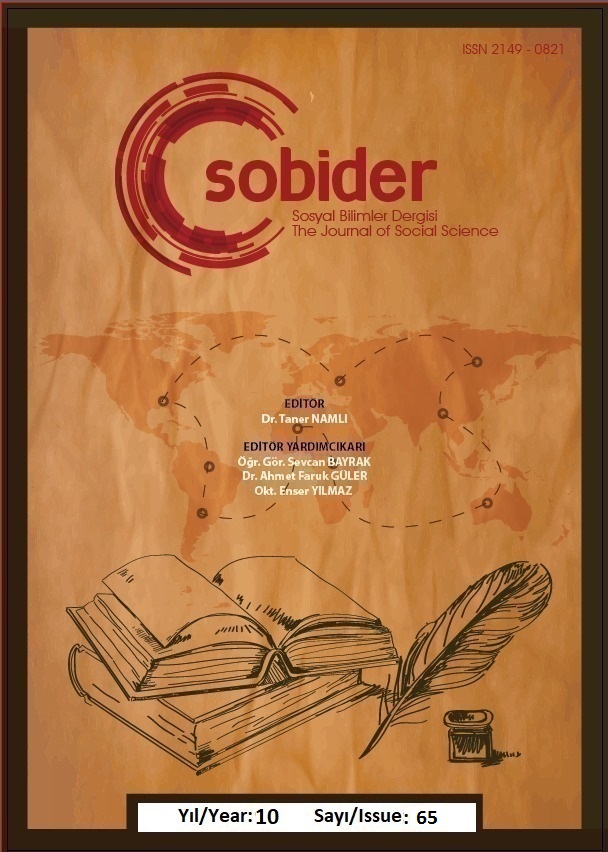Author :
Abstract
Sanat eseri ve sanatçı, her daim yaşadığı çağın aynası konumundadır. Hiçbir sanat eseri yazıldığı dönemden bağımsız, hiçbir sanatçı yaşadığı döneme karşı kapalı konumda değildir. Özellikle köklerini eski Türk kültüründeki ozanlık geleneğine bağlayan âşıklar, icra ettikleri sanatın kendilerine biçtiği rollerle sıradan insanlardan farklı bir konumda yer alır ve yaşadıkları devrin sözcüsü konumuna yükselirler. Böylece yönetici sınıfla halk arasında müstesna bir yere yerleşir ve eserleriyle tarihe tanıklık ederler. Kağızmanlı Cemal Hoca da âşıklar zümresinin yakın dönemdeki canlı örneklerinden biridir. Yaptığı imamlık ve öğretmenlik mesleği hitabetinin kuvvetini arttırmış, Osmanlı Devleti’nin dağılış döneminde Doğu Anadolu Bölgesi’nde yaşanan Rus işgallerine tanıklık etmiş ve Ermenilere karşı savaşmıştır. Hayatında edindiği birikimler ve âşıklık istidadıyla Âşık Ömer, Gevherî, Dertli ve Bayburtlu Zihnî çizgisinde eserler meydana getirmiş ve devrinin güçlü âşıklarından biri olarak kayıtlarda yerini almıştır. Yapılan bu çalışmada Kağızmanlı Cemal Hoca’nın şiirlerindeki alışılmamış bağdaştırma örnekleri incelenmiştir.
Keywords
Abstract
The work of art and the artist are always the mirror of their age. No piece of art is independent of the period in which it was written, and no artist is close to the period in which they lived. In particular, minstrels, rooted in the minstrel tradition in ancient Turkish culture, are in a different position from ordinary people, with the roles assigned to them by the art they perform, and they become the spokesperson of the era they live in. Thus, they occupy an exceptional place between the ruling class and the people and witness history with their works. Kağızmanlı Cemal Hodja is one of the living examples of the group of minstrels in the recent period. His profession as an imam and teacher increased the strength of his oratory; he witnessed the Russian occupations in Eastern Anatolia during the collapse of the Ottoman Empire and fought against the Armenians. With the accumulated knowledge he gained in his life and with his willingness to be a minstrel, he created works along the line of Âşık Ömer, Gevherî, Dertli, and Bayburtlu Zihnî. He took his place in the records as one of the strong minstrels of his era. This study analyzed examples of unconventional adaptation in the poems of Kağızmanlı Cemal Hodja.





